
15 Secret Fairy Tale Castles in Germany
TL;DR
Wondering which castles in Germany to visit? These 15 off-the-beaten-path fairytale castles in Germany are true hidden gems. As a bonus we’ll introduce you to the myths and legends associated with these fairytale castles in Germany!
When you think about fairytale castles Germany you probably think about famous German castles like Neuschwanstein. But there is plenty a fairytale castle in Germany! Did you know that most of them have a legend, a myth, a fairytale, or a song associated with them?
In German we have two different words for “castle”? First, there is the "Burg". In Medieval times, from the 6th to the 15th century, they were built to protect the population from enemy attacks. A "Burg" is a fortification. Second, there is the "Schloss". They were built later, starting in the Renaissance in the 15th century. A "Schloss" is a residence where noblemen and women lived with their families. The walls are thinner, the decor is more lavish, and oftentimes there are big gardens to show power and wealth. Many "Burgen" were converted into "Schlösser" throughout history.
Like always, we have visited all of the places ourselves.
- Untouristy Fairy Tale Castles in Lower Saxony, Germany
- Untouristy Fairy Tale Castlesin Thuringia, Germany
- Untouristy Fairy Tale Castles in Hesse, Germany
- Untouristy Fairy Tale Castles in Berlin and Brandenburg, Germany
- Untouristy Fairy Tale Castles in Saxony-Anhalt, Germany
Untouristy Fairy Tale Castles in Lower Saxony, Germany
1. Castle Plesse / Burg Plesse
This castle from the 11th century is my personal favourite in my home state of Lower Saxony. In all honesty, I try to go there at least once a year. The castle wall with a view over the Leine Valley is my favourite sunset viewpoint. Bring some drinks and food and enjoy a picnic with the locals. If you're not into picnics, there's also a lovely restaurant. You can climb the tower for an even better view of the area. It's so beautiful, you can even get married here. And every once in a while there's a Renaissance Fair.
Of course, there are plenty of hiking opportunities. The wall fortification of the Wittenburg is very close. If you're looking for a longer hike, you can walk the 7 km (4.3 mi) to the Hünstollen observation tower.
The legend of Castle Plesse
In medieval times, if a castle was built, the custom was to sacrifice a child and put it in the castle walls. This ritual should protect the castle and make it impregnable.
Hundreds of years ago, when the Plesseburg was built high above the Leine valley, the lord of the castle was looking for a child to be sacrificed for this ritual. It was a long time before a poor woman from Reyershausen was finally found who was willing to sacrifice her deaf and mute child. The builder, who let the small coffin into the wall of the central gate, took pity on the child. Weeping, he whispered to himself at his cruel work: "What is sweeter than honey? And what's softer than a pillow? Ah, what is harder than stone?”
Then something stirred in the small, closed coffin and whispered in a tormented voice: "Sweeter than honey is a mother's kiss! And softer than any pillow is a mother's lap! Still, my mother's heart is harder than stone!"
The builder immediately rushed to his master, told him about the experience and asked him not to wall the child up. He said the child should be given to loving people down in another village.
The nobleman nodded in agreement. He also decreed that a dead child should be walled up. And so it happened, as the legend tells. In the 17th century, a child's skeleton was found in a leaden coffin in the middle gate of Plesse Castle.

2. Castle Berlepsch / Schloss Berlepsch
Berlepsch Castle is a three-winged castle complex with an inner courtyard and park. The Berlepsch family settled here in the 14th century, the first buildings were built between 1368 and 1369 on the site of today's Berlepsch Castle. The beautiful park with features of an English landscape garden dates from the 18th century. In addition to two restaurants (Berlepscher Round Table and Castle Tavern), Berlepsch Castle also offers castle tours with small exhibitions from the Berlepsch family inventory.
The legend of Castle Berlepsch
According to legend, three dark secret passages begin in the cellars of Berlepsch Castle, which are said to stretch from the castle down to the Werra River. When Count Sittich von Berlepsch came across an opening in the castle cellar that had been bricked up in the mid-1980s, he was electrified. Was there something to the stories about the tunnels under the castle? He dug and actually came across the beginning of a passage leading to one of the castle's keeps. However, it was filled with rubble and the centuries-old waste of the castle residents.
For the next few years, the hobby archaeologist was able to literally dig his way through the history of his family. Today, you can see his findings in the small castle museum.
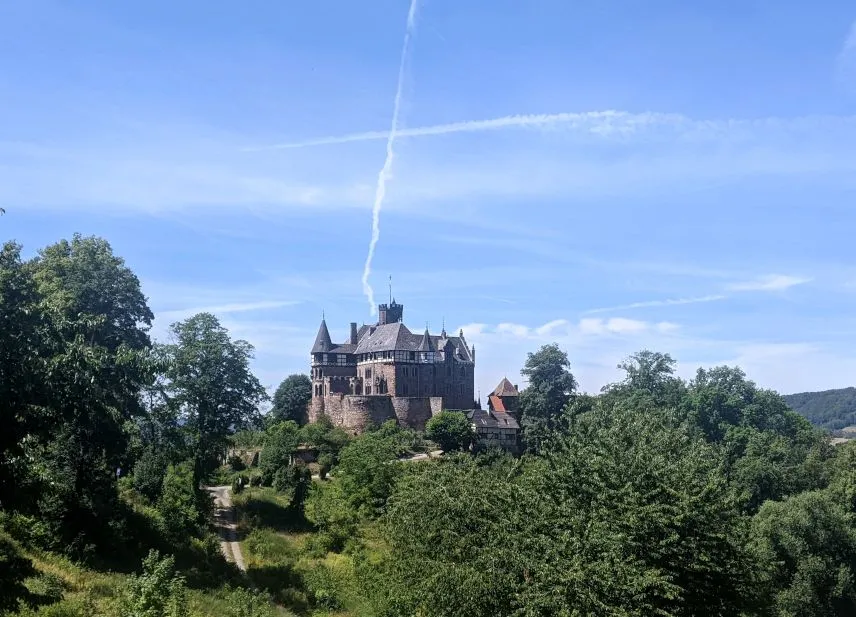
3. Guelph Castle Münden / Welfenschloss Münden
There’s not only the Guelph Castle in the Lower Saxony capital Hannover but also one in the beautiful half-timbered town of Hann. Münden.
It was completed as a Gothic building in 1501 by Duke Erich I of Lüneburg-Braunschweig and from then on served as the residence and administrative centre of the Guelphs. It was almost completely destroyed by fire in 1560 and rebuilt in the style of the early Weser Renaissance.
Nowadays, the Welfenschloss houses the municipal museum with exhibits of the famous Doctor Eisenbart.
The legend of Guelph Castle Münden and Doctor Eisenbart
The travelling Doctor Eisenbart is mostly known for his drinking song:
Ich bin der Doktor Eisenbart,
widewidewitt, bum, bum,
kurier die Leut' auf meine Art,
widewidewitt, bum, bum.
Kann machen, dass die Blinden geh'n,
widewidewitt, juchheirassa,
und dass die Lahmen wieder seh'n,
widewidewitt, bum, bum.
I am the Doctor Eisenbart,
widewidewitt, boom, boom,
will cure the people in my way,
widewidewitt, boom, boom.
Can make it that the blind will walk,
widewidewitt, whoopee hurrah,
and tat the lame can see again,
widewidewitt, boom, boom.
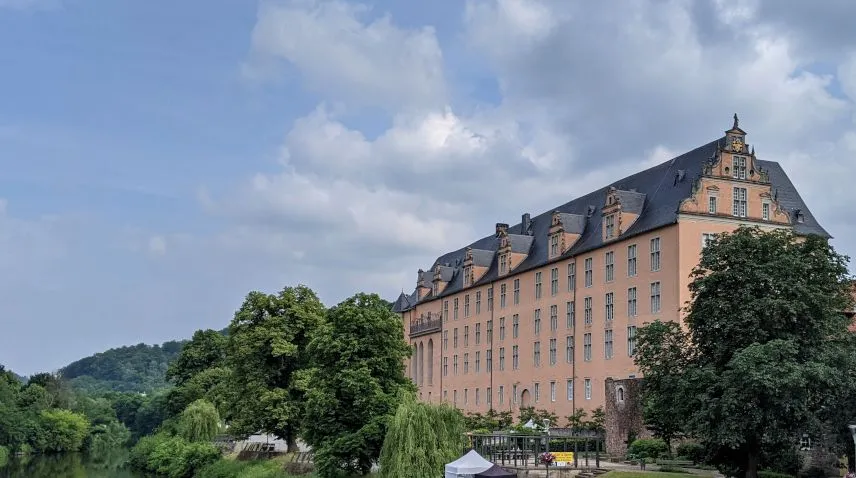
Untouristy Fairy Tale Castlesin Thuringia, Germany
4. Castle Hanstein / Burg Hanstein
Burg Hanstein is one of the biggest and prettiest castle ruins in all central Germany. This hill castle was first mentioned in the 11th century. I love this castle because there is so much to explore. You can climb two towers (the view from the higher tower is 360°!). Additionally, there's a small exhibition, a knight hall and several basements. And it's not overrun by tourists at all – a real adventurer's dream!
There are many great hikes in the area. Our favourite leads you to the Teufelskanzel (devil's pulpit) viewpoint.
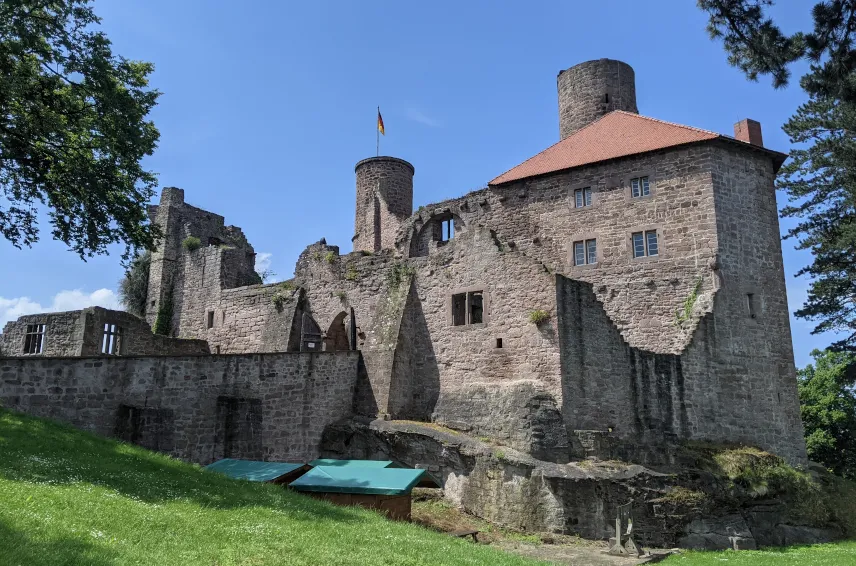
5. Castle Ludwigstein / Burg Ludwigstein
A short 4 km (2.5 mi) hike brings you from Castle Hanstein to Castle Ludwigstein. Inside, you'll find an amazing youth hostel with a pool! As someone, who was fortunate enough to spend a couple of nights here, I must say it's a great budget alternative to expensive castle hotels.
The legend of the Teufelskanzel
I prefer the legend of the Teufelskanzel (devil's pulpit) to the legend of Castle Hanstein or Castle Ludwigstein so here it is:
Once, on Walpurgis Night, when the witches held their annual gathering on the Brocken, at which the devil was always present, he agreed to a bet.
The assembly asked him whether he was capable of carrying a massive rock to the Hohen Meissner mountain in Hesse. However, he was not allowed to put the rock down or take a break.
As soon as the dance was over, Satan swept away with the rock. The wild ride went well for a while, but then the devil felt that he had overestimated his strength. The stone grew heavier by the second, and when he reached Castle Hanstein, he felt so weak that he decided to rest for an hour.
The witches sent some observers after him. "You lazybones, what are you doing there?" they shouted at him and laughed at him. The devil awoke with a start and embarrassed to see himself caught, flew into the air, tore up the curious witches, and sped off, not bothering again about the boulder.
When the people heard the story, they called the rock in front of the mountain the devil's pulpit.
6. Imperial Castle of Kyffhausen / Reichsburg Kyffhausen
The Imperial Castle of Kyffhausen was founded in the year 1000 to replace the nearby imperial palace (Kaiserpfalz) of Tilleda. It's a huge area, comprised of a lower, middle, and upper castle. The lower castle is the best-preserved part: It features the outside wall, a chapel and several structures like remnants of foundations of residential and farm buildings. You walk through the middle castle to reach the upper castle but you cannot enter it. The upper castle is the oldest part of the castle. It was mostly destroyed to build the Kyffhäuser Monument between 1890 and 1896. The best-preserved part is the keep.
The Kyffhäuser Monument is a sight in itself. With 81 m (266 ft) it's the third-largest monument in Germany. It aimed to depict the German Empire as the legitimate successor to the Medieval Holy Roman Empire. If you climb the 247 steps to the top of the monument, you have a great view over the surrounding Kyffhäuser Mountains all the way to the Harz mountains with the Brocken.
The legend of Reichsburg Kyffhausen
Reichsburg Kyffhausen is home of the Barbarossa saga (also “Kyffhäuser saga”). It says: The old Emperor Friedrich Barbarossa was transferred to an underground castle on the Kyffhäuserberg by magic. Here, he is asleep seated on an ivory chair and resting his head on a marble table. His red beard, which resembled yellow flax when he was alive, shines like embers from the fire and has grown through the table. Sometimes the emperor moves his blond head, half lifts his heavy eyelids and blinks his eyes. With such a dreamlike twinkle in his eye he beckons, over long periods - 100 years - to a dwarf, scarcely the size of a boy, to go up and see whether the ravens, the images of discord and misfortune, are still flying and croaking around the mountain. If this is the case, the emperor closes his eyes with a sigh, sleeps and dreams again for 100 years. Only when the beard has grown all the way around the round marble table and a mighty eagle soars in proud flight, circles the mountain and scares away the swarm of ravens, only then will the emperor and his followers, who are also enchanted, awaken.

7. Wartburg
The Wartburg is a castle originally built in the Middle Ages. It is situated 410 meters (1,350 ft) above the town of Eisenach. It was the place where Martin Luther translated the New Testament of the Bible into German. Although the UNESCO World Heritage Site still contains substantial original structures from the 12th through 15th centuries, much of the interior dates back only to the 19th century.
If you’re looking for a great view of the Wartburg, we recommend you hike up the Metilstein.
The legend of the Wartburg
According to the legend, Count Ludwig the Springer used a trick to become the owner of the mountain on which the Wartburg was to be built.
It was Count Ludwig the Springer, a powerful lord in Thuringia. When he once hunted, he met a piece of game, which he eagerly pursued to the mountain on which the Wartburg now stands. There, he looked at the beautiful area and thought to himself: "Wait, mountain (Wart' Berg), you should become a castle for me!" Unfortunately, the mountain belonged to the Lords of Frankenstein.
The Count had twelve knights with him, brave honest men, with whom he secretly consulted. At night, they carried earth from his property to the Wartberg and strew it on it. The Count built a fortification behind which he could defend himself. Soon the lords of Frankenstein came, but could not do anything against the count on his rocky fortress, so they complained to the emperor that he was arrogantly usurping what was theirs.
When questioned by the emperor, the Count replied: He had built the castle on his own earth, and would like to keep it. Thereupon the emperor decided that if he could prove and swear with twelve honest men, that the land on which he had built was his, he should keep it. The Count chose his twelve knights as sworn assistants, stepped with them onto the mountain, stuck their swords into the earth they had previously carried up and swore that their lord, Count Ludwig, stood on his own. So he kept the mountain.
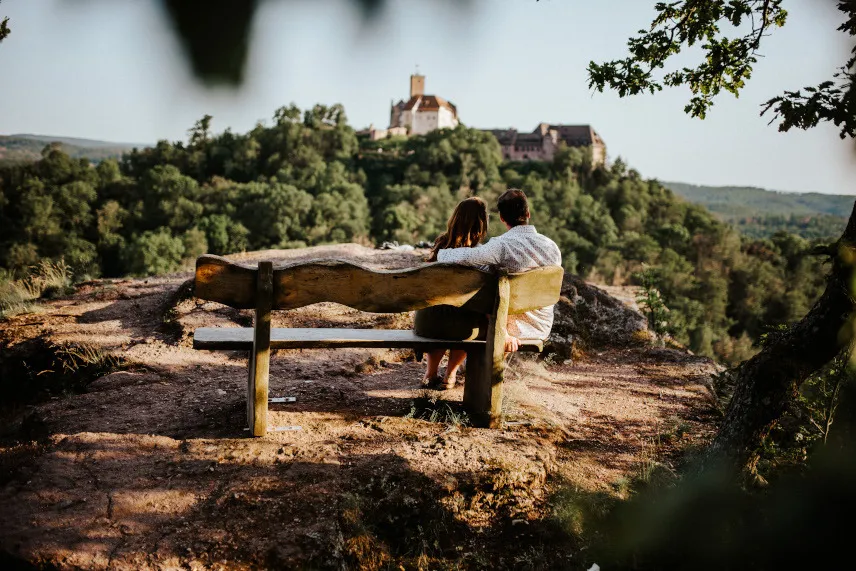
Untouristy Fairy Tale Castles in Hesse, Germany
8. Krukenburg
This hill castle was first mentioned in the 13th century. You can climb the tower for a great view over the North Hessian mountains and the Solling, as well as the old historical town of Helmarshausen with its monastery. You can explore an old church and many other nooks and crannies. There's a basement you can rent for celebrations. Additionally, there's a Sleeperoo Cube if you want to sleep in the castle.
You are very close to the amazing towns along the Weser River which offer amazing opportunities for sightseeing and bike rides.
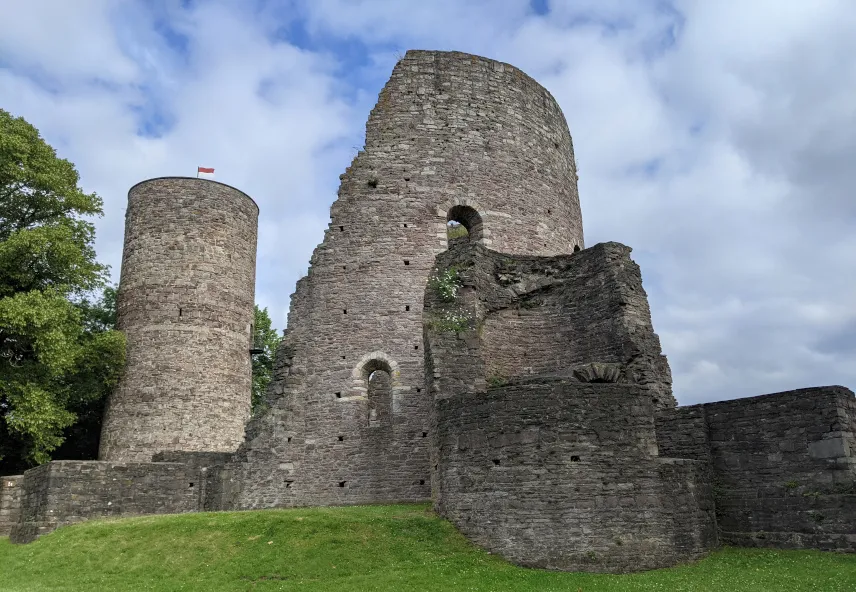
9. Sababurg
Like the Krukenburg, the Sababurg belongs to the North Hessian castles in the catchment area of the Reinhardswald. It was first mentioned in the 14th century. It's called "Sleeping Beauty Castle" and is part of the German Fairytale Road. There used to be a hotel inside but nowadays you have to divert to the hotel in the nearby Trendelburg.
The Sababurg is adjacent to one of the first zoos in Europe, the Tierpark Sababurg. It was founded in the 16th century. Nowadays, you can see local animals like wild horses and wolves, but also exotic animals like kangaroos, monkeys, penguins and llamas. Next to it is the Sababurg Primeval Forest, a nature reserve with 1000-year-old oaks, high ferns, and beeches.

10. Trendelburg
The Trendelburg is the third of the three North Hessian castles Krukenburg, Sababurg, and Trendelburg.
The highlight of the castle is the Rapunzel Tower with a height of more than 40 meters and walls up to 7 meters thick. According to the legend, this is where the Rapunzel of Grimm’s fairytales was kept. "Rapunzel, Rapunzel, let down your hair".
Those who don't shy away from the more than 130 steps can climb Rapunzel’s tower and enjoy a fantastic view of northern Hesse. Nowadays, the tower even features a whole floor dedicated to the Brothers Grimm.
There’s a beautiful hotel inside the castle.
The legend of the Krukenburg, Sababurg, and Trendelburg
The giant Kruko had three daughters – Brama, Saba and Trendula. Brama and Saba had turned to the Christian faith, while their sister Trendula continued to be pagan. They moved away from the Krukenburg and founded their own castles, Brama the Bramburg, Saba the Sababurg, and Trendula the Trendelburg. Out of anger, Trendula killed her sister Saba. Trendula herself was struck by lightning in a divine judgment.
11. Biebrich Palace / Schloss Biebrich
Biebrich Palace is the gem of your Wiesbaden trip. The castle is a Baroque residence in the borough of Biebrich in the city of Wiesbaden. Built in 1702 by Prince Georg August Samuel of Nassau-Idstein, it served as the ducal residence for the independent Duchy of Nassau from 1816 until 1866.
The legend of Biebrich Palace
Before the modern castle was even erected, a fiery horseman is said to have gone around night after night in the late Middle Ages in the park of Biebrich Castle.
It is said that it was the knight Dudo von Bieburg who found no peace in his grave. He is said to have committed treason against the city of Mainz but could not really be happy about it. He committed suicide and had to pay for his bitter crime night after night ever since then...
Only when a pious man prayed nightly with a clergyman was the fiery rider redeemed.

Untouristy Fairy Tale Castles in Berlin and Brandenburg, Germany
12. Castle Wiesenburg / Schloss Wiesenburg
The roots of Wiesenburg Castle go back to a medieval castle from the 12th century, which was replaced by a new castle after a fire in the 16th century. Over the centuries, it was gradually expanded to its current size. The castle received its Neo-Renaissance appearance during renovation work in the 19th century. Nowadays, it’s converted into an exclusive residential and office complex.
The beautiful palace park is open to the public. You can also climb the tower for amazing views.
The legend of Castle Wiesenburg
On the night of May 1st, the Renaissance fountain of the castle is supposed to start moving. He walks to the medieval chess board where you can climb into the fountain and find great treasures…
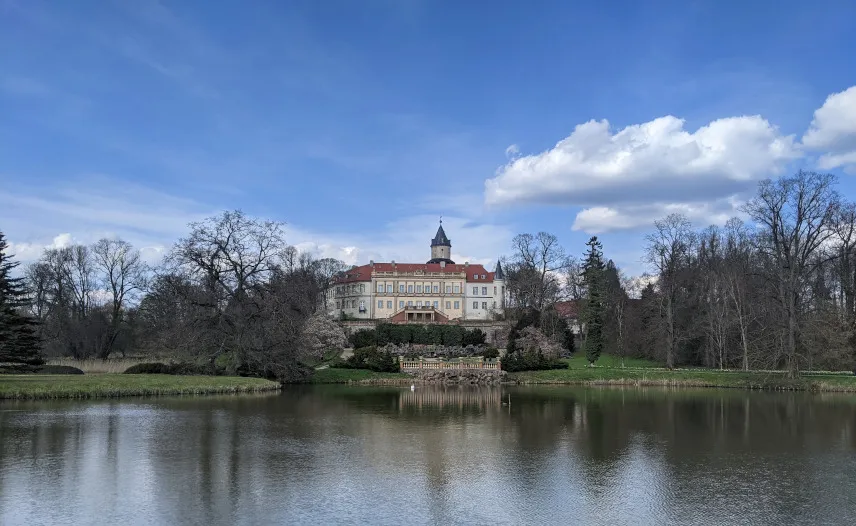
13. Castle Eisenhardt / Burg Eisenhardt
Bad Belzig's striking historic landmark towers high above the town - Eisenhardt Castle. The castle complex is surrounded by a closed ring wall with defensive towers that can be walked on. Eisenhardt Castle is the largest hilltop fortress in northern Germany.
Nowadays, it houses the local history museum in the late Gothic gatehouse. You can also climb the castle tower which offers a beautiful view of Bad Belzig and the surrounding landscape. Don’t miss the Café und Chocolaterie on your visit!
The legend of Castle Eisenhardt
Many years ago, a burgrave lived at Castle Eisenhardt with his virtuous, beautiful daughter. She came into town almost every day to do some shopping. One day, a journeyman saw her and fell passionately in love with her.
At night he crept to the castle and climbed up the tower in the moonlight. Finally, he reached the window of the tower room where the young lady was sleeping. On the warm summer night, the window was open and the journeyman entered the room with a beating heart. After standing in front of his chosen one's bed for a long time and staring at her beauty, he finally dared to kiss the sleeping girl timidly on the lips. With a cry, the damsel jumped up and looked in astonishment at the strange youth who had fallen on his knees in front of her bed, confessed his love to her in hot words and asked forgiveness for his boldness.
At this moment, the lord of the castle stepped in, red with anger. In vain the young fellow fell on his knees before him; in vain did the daughter, whose heart was moved with deep pity, begged for mercy. The burgrave threw the bold intruder into the castle dungeon. "Tell me where the silver glow on the pavement by the postal column comes from every evening, and you shall be free."
The journeyman could not solve the riddle, nor did he manage to escape from this dungeon. Finally, sleep settled in, and early in the morning, he had a strange dream. In the morning, the hangman comes in laughing "He wanted to fly high, so he may be hanged." "Not yet," said the journeyman boldly. "Give me a spade and follow me!"
The journeyman was told to go ahead, followed by the damsel. He grabbed the spade and walked down to the town. Arriving at the postal pillar, he stopped and began to dig eagerly. The youth lifted a heavy earthen vessel. "From this silver," he said, "every evening comes the silver glow on the pavement," and he took off the lid. The vessel was filled with pieces of gold and silver.
The journeyman respectfully handed the jug to the lord of the castle. Then he fell at his feet and begged for his life. But the burgrave lifted him up, led him to his daughter and said: "I'll give you not only your life but also my daughter's hand if she likes you." The wedding was celebrated on the same day, and soon afterwards the young fellow was knighted and became lord of Eisenhardt Castle.
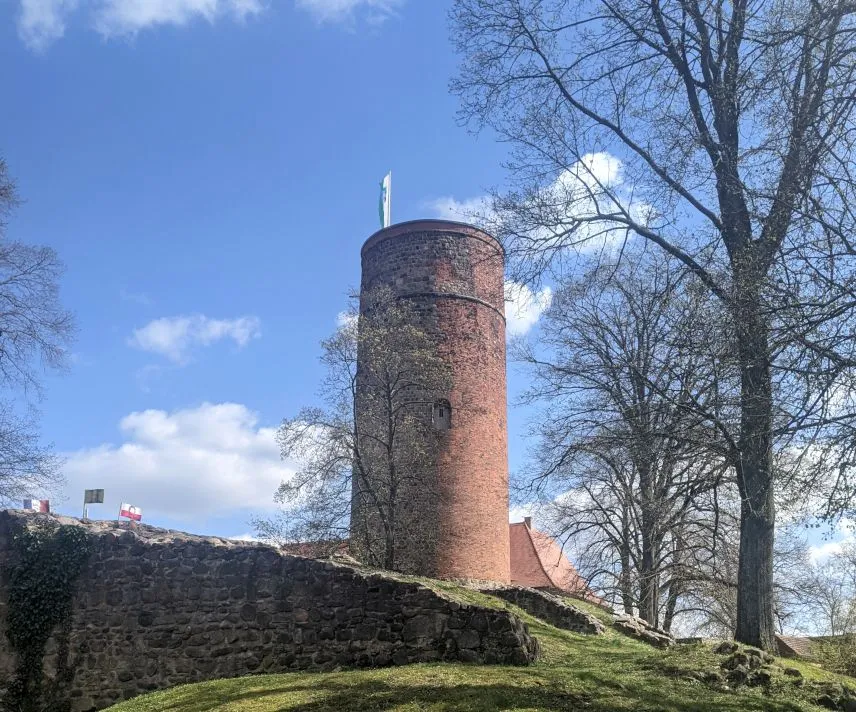
14. Spandau Citadel / Zitadelle Spandau
The Spandau Citadel is a fortress. Built from 1559–94 on an island near the meeting of the Havel and the Spree Rivers, it is one of the best-preserved Renaissance military structures in Europe. In recent years it has been used as a museum (the UNVEILED exhibition displaying discarded statues is a total recommendation!) and an open-air concert venue.
The Julius Tower of the Spandau Citadel from the beginning of the 13th century is the oldest building in Berlin.
The legend of Spandau Citadel
The Zitadelle Spandau has its very own version of the White Lady: Anna Sydow.
Anna Sydow died after being held captive in the Julius Tower of the Zitadelle Spandau for four years.
Anno Domini 1598, on the first night of the year, a woman, dressed in white is said to have appeared to Johann Georg, Margrave of Brandenburg, in the rooms of his residential palace. The woman was Anna Sydow, his father's mistress, whom he, the son, imprisoned contrary to his promise, and who has been dead for a little over 22 years. A week later, Johann Georg, Margrave of Brandenburg died at the age of 72.

Untouristy Fairy Tale Castles in Saxony-Anhalt, Germany
15. Wittenberg Castle and All Saints' Church / Schloss Wittenberg und Schlosskirche
Wittenberg Castle is the former residence of the Saxon electors. When it was completed in 1525, it was one of the most magnificent fortified castles of the early Renaissance in Germany.
Nowadays, it is mostly known for its church called the All Saints' Church. Don’t miss out on climbing up the tower for an amazing view!
The legend of the All Saints' Church
In contrast to the other legends in this blog post, this story is based on a true historic event.
In 1517, Martin Luther wrote his list of 95 theses, signalling the birth of Protestantism. In these Theses, Luther challenged the views of the Catholic church. Luther sent the Theses to the Archbishop of Mainz. Luther may have also posted the Ninety-five Theses on the door of All Saints' Church and other churches in Wittenberg, in accordance with University custom.
The story of the 95 theses is still told to every child in school in Germany, and the All Saints' Church features commemorative doors.

This post contains affiliate links. If you use these links to buy something we may earn a commission. You would help us a lot if you do so. Thanks.